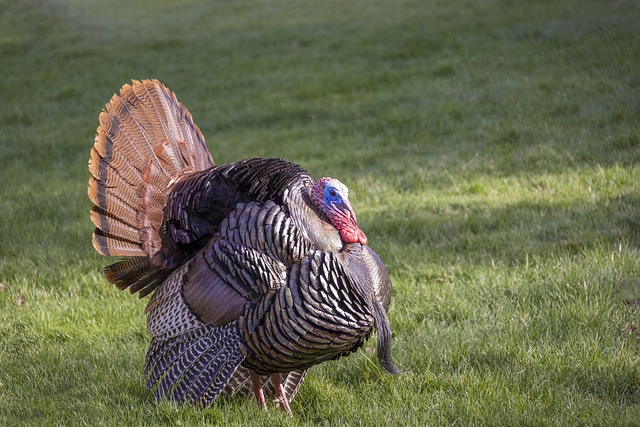Best Time to Hunt Turkeys: Spring vs Fall Explained

Best Time to Hunt Turkeys Spring or Fall Explained for Optimal Results
Turkey hunting is popular in both spring and fall, but each season offers different challenges and advantages. Spring hunting usually involves calling to attract turkeys, while fall hunting focuses more on finding and sneaking up on flocks.
The best time to hunt turkeys depends on what style of hunting a person prefers, but many agree spring offers more opportunities due to active mating behaviors. Fall hunting can still be valuable for practice and learning turkey movements.
Hunters choosing between spring and fall should consider their goals and local regulations, as seasons vary by location. Understanding these differences can help improve success and enjoyment in the hunt.
Understanding Turkey Behavior in Spring and Fall
Turkeys behave differently in spring and fall because of changes in weather, breeding, and social habits. These differences affect where they move and how hunters can approach them. Knowing how turkeys act during each season helps hunters plan better.
Seasonal Changes in Turkey Behavior
In spring, turkeys become more active as temperatures rise and days get longer. They spend more time strutting and making calls to attract mates. Their feeding patterns change too, often moving from forest edges to open fields.
In fall, turkeys focus on feeding to build fat for winter. They tend to gather in flocks and move less to save energy. Weather changes can also push them into thicker cover or different feeding spots. Hunters need to spot these shifts to position themselves correctly.
Breeding Season Influences
Spring is the turkey’s breeding season, which drives most of their unique behaviors. Males, or gobblers, strut and make loud gobbles to attract hens and defend territory. This makes them more visible and easier to locate.
During this time, turkey hens are also more responsive to calls because they are selecting mates. Hunters often use calls to mimic these sounds and lure turkeys closer. In fall, breeding is over, so turkeys are less vocal and more cautious.
Flock Patterns and Movements
In spring, turkeys often break into smaller groups or stay alone, especially males focused on courting hens. This scattered pattern means hunters might target individual birds or small groups. Hens usually move with their poults.
In fall, turkeys form larger flocks to protect each other and share food sources. These groups move together during the day, making it important for hunters to find common feeding and roosting areas. Understanding when and where turkeys travel helps hunters set up effectively.
Hunters should also consider using the right turkey hunting gear to adapt to these behaviors and improve their chances.
Spring Turkey Hunting: Advantages and Challenges
Spring turkey hunting offers unique chances to hear loud gobbling and watch toms display. Hunters must use calling skills and understand weather effects. Success depends on recognizing turkey behavior and adjusting to their habitat.
Peak Gobbling Activity
Spring is when male turkeys (“toms”) gobble the most. This happens mostly in early mornings and just before sunset. Gobbling is a way toms attract hens and warn rivals. This loud sound helps hunters locate turkeys from a distance.
Gobbling peaks during the breeding season, which lasts for several weeks. Hunters can expect the most gobbling right at dawn and less by midday. Outside these times, turkeys become quieter and harder to find.
Since gobbling alerts a tom’s location, hunters use it to their advantage. Listening carefully and timing their calls around peak gobbling can bring turkeys into range.
Responses to Calling Tactics
In spring, turkeys respond strongly to calls that mimic hens or rival toms. Hen yelps, clucks, and purrs are common sounds used to draw a tom’s attention. Some hunters also use aggressive gobbles to challenge a tom.
Successful calling requires patience and practice. Over-calling can scare turkeys away, while too little may not provoke a response. It helps to watch how turkeys react and adjust calls accordingly.
Using decoys can increase calling success by giving turkeys a visual target. Setting up these decoys close to calling spots can trick turkeys into approaching. Hunters can learn effective decoy setups from expert techniques and tips on positioning.
Weather and Habitat Conditions
Spring weather is often cool and wet, which affects turkey movement. Turkeys tend to stay in areas with dense cover to avoid bad weather. Because of this, hunters must find spots near thick brush or hardwood trees.
Rain or wind may reduce turkey activity or make gobbling less frequent. Early spring mornings can be cold, so hunters should prepare for changing conditions.
Changing food sources in spring influence turkey locations. They feed on insects and fresh plants, moving between fields and wooded areas. Tracking these seasonal food changes is important for finding turkeys.
Spring hunting requires understanding how weather and habitat affect turkey behavior to get closer and improve chances of a successful hunt.
Fall Turkey Hunting: Key Considerations
Fall turkey hunting focuses on finding groups of birds that have broken up from their spring breeding behavior. Hunters need to know how turkeys move and feed in autumn and adjust their calling techniques to fit this time of year. Understanding these elements helps improve success.
Flock Dynamics and Break-Up Strategies
In the fall, turkeys form larger flocks that mix males and females, unlike the mostly male groups in spring. These flocks move together through feeding and roosting areas, making it key to locate their routes.
Hunters should watch for signs of flock movement like trails, droppings, and feather sheds. Setting up near these areas allows for better chances to intercept.
Because turkeys are more cautious in fall, hunters often have to sneak in quietly or find spots where turkeys pass regularly. Patience and careful observation of the flock’s pattern helps in positioning for a shot.
Feeding Patterns in Autumn
Turkeys in fall feed heavily to prepare for winter. They look for food sources like acorns, seeds, and insects. Late afternoon is when turkeys often move towards feeding grounds, offering a prime time for hunting.
Hunters should find places where food is plentiful and watch when the birds arrive to eat. Areas near fields, forests with nut trees, or waters can be productive.
Using natural cover near feeding areas helps remain unseen. Timing your hunt around feeding schedules improves the chance to encounter a turkey actively foraging.
Differences in Calling Methods
Fall turkey calling differs from spring because turkeys are less responsive to mating calls. Instead of using aggressive or mating sounds, hunters employ softer calls to imitate flock communication and contact calls.
Learning to use a variety of calls can attract birds without alarming them. Calls like clucks, purrs, and yelps work best for fall, helping to mimic natural turkey sounds during this non-breeding season.
Hunters interested in improving their calling should explore different types of turkey calls to understand what works best during fall hunting. Adjusting calling based on turkey behavior is essential for success.
Frequently Asked Questions
Turkeys are most active during specific times of day and seasons. Hunters use various tactics depending on the time and turkey behavior to improve their chances. Understanding turkey habits helps decide when and where to hunt effectively.
What is the optimal time of day for successful turkey hunting?
Early morning is the best time for turkey hunting. Turkeys are most active at dawn when they leave their roosts. Late afternoon can also offer opportunities but tends to be less productive.
During which season is turkey activity at its peak?
Turkey activity peaks in spring during the mating season. Male turkeys are more vocal and responsive then, making spring the preferred hunting season. Fall hunting is possible but requires different tactics.
What strategies are effective for afternoon turkey hunting?
Afternoon hunting requires patience and stealth. Hunters should locate feeding areas or known travel routes and set up quietly. Calling can still work but is less reliable later in the day.
Calling techniques can be improved by using specific turkey calls to attract birds.
When is the turkey mating season and how does it affect hunting?
Turkey mating season happens in spring. During this time, males are highly vocal and display often. Hunters use calling to mimic these sounds to lure turkeys into range.
For how long should a hunter remain stationary when turkey hunting?
A hunter should stay still for at least 20 minutes or more to avoid spooking turkeys. Movement alerts turkeys, so patience is crucial to let birds come near on their own.
At what time do turkeys typically roost?
Turkeys roost before sunset, usually early evening. Hunters can scout roost sites the day before and set up nearby at first light to catch turkeys leaving their roosts. This tactic is effective during both spring and fall seasons.
